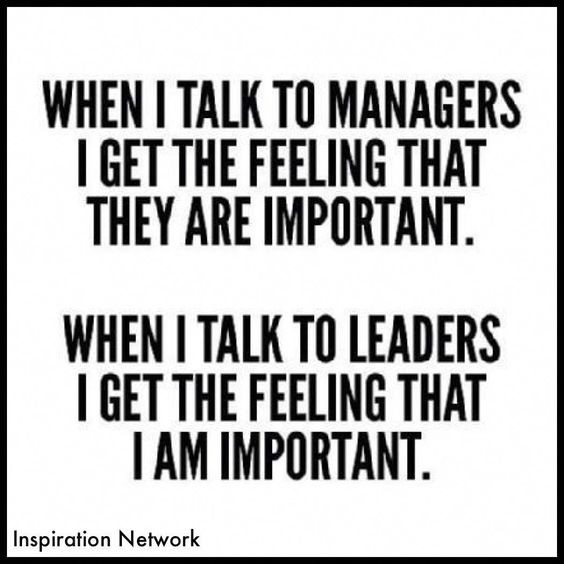Growing a nonprofit takes more than just passion: you also need creativity, persistence, and a handful of nonprofit leadership skills to guide your organization through the growth years and fulfill your mission.
Without good leadership, everything falls apart.
It’s like a band with no director – everyone is playing their own song and together it’s just noise instead of beautiful chords of music.
Leaders can see the path forward for the organization. They can help the organization set and achieve goals.
Without leadership, a small nonprofit may never reach its full potential. The organization can stagnate or experience chaos. Consequences can range from disorganization to ethical compromises.
At a minimum, a team with a poor leader is unproductive like this one:
With the right leadership, a nonprofit can grow quickly, fulfilling its mission and meeting a community need or eliminating a problem. It can attract a lot of support, with donors and volunteers lining up to help.
Usually, if a nonprofit is struggling in any way, there’s a leadership issue at the top.
So, if leadership is the difference between a nonprofit’s success or failure, what does it take to be a good leader? What nonprofit leadership skills does a Founder or Executive Director need to steer the ship?
What Nonprofit Leadership Really Is
By definition, a leader is someone in a position of authority with the responsibility to guide a group.
They inspire people, they solve problems, and they build teams. They’re responsible for planning, organizing, and directing a group so that goals are reached in a timely fashion.
Good leadership helps everyone understand what the impact goal is, makes sure they have what they need to do their job, provides encouragement, and monitors progress as the team moves forward.
If your team were in a rowing race, the leader points out the finish line, makes sure everyone has a paddle and knows how to use it, shouts out encouragement as the race starts, and not only keeps an eye on the competition, but keeps everyone rowing together for maximum speed.

In a small nonprofit, the leader wears many hats. They:
- Guide strategic planning
- Keep the Board engaged and on-task
- Make sure programs and services are delivered
- Raise money
- Supervise staff and volunteers
- Do 100 other things, sometimes including cleaning the toilet
Your Leadership Style
Every leader has a way or a style of leadership that they use.
Here are some common ones that are most often seen in nonprofit leaders. I call these the 4 “tator” styles of leaders.
- Dictator. Some leaders are very controlling and need everything done their way. The upside is that they can ensure that things are done to their standards. The downside is that they don’t delegate so they wind up doing everything themselves. There’s no room for others to help out and often, Board members and key volunteers get frustrated and leave, feeling unneeded.
- Citator. Some leaders are authoritarian and like to tell their team exactly how to do their job. They have all the answers and aren’t shy about micromanaging. The upside is that they know how everything in their organization works and can provide backup for most, if not all, staff positions. The downside is that they tend to leave no room for anyone else’s ideas which squashes creativity and can lead to high staff and volunteer turnover.
- Facilitator. Some leaders are inclusive, letting their team have input into decisions. They like everyone to have a seat at the table which can be empowering to the team. The upside is that team members feel included and many good ideas are born and refined through the group think. The downside is that the team can flounder if the leader lets everything be decided by the group, especially in times of crisis when decisions need to be made quickly.
- Spectator. Some leaders are hands off and don’t do much of anything, letting the team figure everything out themselves. The upside is that there is space for new leaders to emerge. The downside is that the team’s efforts can be disjointed and progress can be slow. Factions can emerge and infighting among the team can get ugly because there’s no one to be the referee or remind everyone of their role.
Not sure of your leadership style? There are lots of tools out there that can help. Here’s a fun, fast, and free leadership quiz you can take: https://www.mindtools.com/pages/article/leadership-style-quiz.htm
 Not everyone is a born leader. Some people start a nonprofit or take a Director’s job and find themselves in a leadership position by default.
Not everyone is a born leader. Some people start a nonprofit or take a Director’s job and find themselves in a leadership position by default.
Whether you consider yourself a leader or not, there are specific nonprofit leadership skills you can learn that will help you reach your goals and fulfill your organization’s mission faster.
As you read through these, give yourself an honest assessment. How strong is each skill for you? Where do you need to improve?
The more you work to improve your nonprofit leadership skills, the faster and stronger your nonprofit can grow.
9 Top Nonprofit Leadership Skills
1. Planning. Success doesn’t happen by accident. In order to reach your goals, you need a well-thought-out plan. You must think about both long-term and short-term goals and how you’ll reach them. In other words, plan for today, this week, this month, this year, and this decade. In your plan, be sure to include who (help you’ll need) will do what (responsibilities), what things will cost (budget), and how you’ll stay on target (accountability). Remember, as a leader, others will look to you to know what needs to happen next.
When a leader is a planner, the organization is more stable and the team feels a sense of security knowing what’s coming down the pike. Surprises are few and opportunities are easily evaluated and leveraged. When the leader isn’t a planner, the nonprofit loses a lot of time to disorganization and chaos. The team spins their wheels and finds it difficult to make progress with anything.
2. Public speaking (and sharing your vision). A consistent trait I see among those I consider wildly successful nonprofit leaders is their ability to share their vision with others, either one-on-one or in a group. You need to articulately describe the need you’re addressing in a way that moves listeners’ hearts. When you confidently share about your vision and why it matters, you’ll attract supporters. Passion, clarity, and confidence are key to telling your story.
When a leader is a charming, charismatic speaker, people tend to flock to them like moths to a flame. Their nonprofit quickly becomes one of the community’s favorites. When a leader can’t express their passion or vision, they struggle to garner the support they need. Frankly, they bore people when they talk about their nonprofit’s work, which makes fundraising difficult.
3. Recruiting help. The old saying “many hands make light work” is true. There’s no way you’ll reach your goals and see your nonprofit through to success by yourself. You must have help. Whether it’s volunteers, interns, subcontractors, or paid staff, having others around you will help you get more done. What help do you need? Who is ideal to help you? Where will you find them? How will you set them up for success? Finding and keeping good help is critical to your nonprofit’s success. Leaders who play in their strengths and delegate the rest are more productive.
Leaders who value volunteers and engage them in meaningful ways will always have help. Those who don’t appreciate volunteers or consider them disposable will soon find that they can’t get anyone to help with anything.
4. Building relationships. No one wants to be “hit up” for anything. It feels manipulative. Instead, people help those they care about. What’s the difference? It’s all about the relationship. When you invest a little time in getting to know them, it creates trust. Build that trust, and that person will likely reciprocate in caring about you, too. Most folks get hung up when it comes to building relationships on purpose because it feels odd. We’re used to relationships growing naturally, and when work on a relationship for the purpose of getting a donation, it can seem uncomfortable. As long as your intention is good, there’s nothing wrong, so don’t worry about it. Keep the best interests of the donor in mind and you won’t have any need to feel yucky.

A nonprofit leader must build relationships with a wide variety of people and make every one of them feel important. From your biggest donor to your Board Chair to the volunteer you only see once in a while to someone who buys something from your thrift store, it’s your job to make them feel good about their association with your organization.
Leaders who do a good job of building relationships will always have support. Those who don’t take the time for relationships or who get so focused on money that they neglect the source of the money will find fundraising difficult.
Not everyone is a “people person” but everyone can learn to put people first, especially leaders who need people to support their organization’s mission in order to grow.
5. Crunching numbers. You must be able to tell your nonprofit’s story through numbers. How many lives need your services? How many have you helped so far this year? What does it cost you to deliver a unit of service? Get comfy with numbers, because a good leader can share key numbers easily and confidently talk about them. You need to be able to understand your nonprofit’s basic financial statements. An excuse like “I’m not a numbers person” does not let you off the hook. I was pretty intimidated by numbers when I first started my nonprofit career. One look at the budget and I would glaze over. But I forced myself to listen to the financial conversations at the Board meetings. I attended Finance Committee meetings and tried to learn one thing each time. I didn’t always follow the conversation, but I usually picked up a nugget. After many months of this, I cobbled together a basic understanding of financial statements. I’m still no numerical genius, but I know enough to explain it to a donor, and that’s what matters.
When leaders don’t understand or avoid numbers, lots of bad things can happen from misrepresentation of the nonprofit’s work to overspending and even bankruptcy. Leaders who understand their numbers can keep their nonprofit financially healthy and easily explain their key stats to funders.
 6. Managing time. Wouldn’t it be nice if there were more hours in the day to get stuff done? Between our long lists of things to do and increasing demands on our time, it’s easy to feel stretched too thin. It’s up to us to know what to focus on and to set the boundaries on what we will and won’t do. You need to learn to manage your time so that you get done what you need to get done and say “no” to the rest. Simple things can help – like working in your strengths. Turn off your email. Outsource or automate everything you can. Don’t say “yes” to everyone and everything simply because you think you’re supposed to or because you don’t want to hurt anyone’s feelings. Guard your time – you’re the only one who can.
6. Managing time. Wouldn’t it be nice if there were more hours in the day to get stuff done? Between our long lists of things to do and increasing demands on our time, it’s easy to feel stretched too thin. It’s up to us to know what to focus on and to set the boundaries on what we will and won’t do. You need to learn to manage your time so that you get done what you need to get done and say “no” to the rest. Simple things can help – like working in your strengths. Turn off your email. Outsource or automate everything you can. Don’t say “yes” to everyone and everything simply because you think you’re supposed to or because you don’t want to hurt anyone’s feelings. Guard your time – you’re the only one who can.
A good leader protects their time and spends it on things only he or she can do. They avoid time wasters and they don’t try to do everything, but only those things that move them forward. A leader who can’t manage their time is distracted and disorganized, always working on things at the last minute.
7. Leading people. You’re the leader and people will look to you for direction. Be ready to paint the picture of where you’re going and then motivate folks to join you for the journey. Being a good leader is about setting the pace and then inviting others to follow. It’s not about forcing anyone to do anything. Sometimes it means working side-by-side with your team to get the job done and sometimes it’s about clearing a path through the jungle they can follow.
When done well, it’s like being the Pied Piper – people seem to naturally want to follow you. A leader who can’t lead is like a boat without a rudder, floating aimlessly through the water.
8. Delegating. You’ll never grow your nonprofit to its fullest potential on your own. There’s too much to do. And part of building a team around you is delegating. Give people stuff to do. Explain what needs to be done and how it fits into the big picture. Give them a deadline. Then give them the support they need to get it done. Most people want to help, but if they aren’t clear about what needs to be done, they’ll stumble. Part of good delegating is giving clear directions and accountability.
Leaders who delegate find they can spend more time on things that only they can do. They create time to focus and get things done. Leaders who don’t delegate struggle to get things done. They find their plate overflowing with tasks and can easily become workaholics.
 9. Self care. Don’t gloss over this one! We all know we need to eat right, exercise, and get enough rest. So why don’t we do it? Why do we have an epidemic of stressed out and exhausted people? I think because we take it for granted. Here’s the bottom line: You won’t be successful if your body starts to fail you, so keep it in tip-top condition. I find that exercise not only helps my physical strength, but my mental strength, too. Find what works for you and do it. It’s all about self discipline and commitment to yourself. Value YOU as much as you value the lives your nonprofit seeks to serve.
9. Self care. Don’t gloss over this one! We all know we need to eat right, exercise, and get enough rest. So why don’t we do it? Why do we have an epidemic of stressed out and exhausted people? I think because we take it for granted. Here’s the bottom line: You won’t be successful if your body starts to fail you, so keep it in tip-top condition. I find that exercise not only helps my physical strength, but my mental strength, too. Find what works for you and do it. It’s all about self discipline and commitment to yourself. Value YOU as much as you value the lives your nonprofit seeks to serve.
A good leader takes time for themselves and understands the importance of balance in their work and life. A poor leader thinks self care is hooey and just wants the task done, whatever it takes.
The Bottom Line
Good nonprofit leadership skills are the key to successfully growing a small nonprofit.
Whether you think you’re a leader or not, if you’re in a leadership role, you must learn to plan, delegate, inspire, and more. You’re job becomes growing into the leader your nonprofit needs to succeed.
Additional Resources
Blog post: Are you creating magic in your nonprofit? https://getfullyfunded.com/are-you-creating-magic-in-your-nonprofit/
Book: Toy Box Leadership: Leadership Lessons from the Toys You Loved as a Child by Ron Hunter and Michael Waddell






[…] It’s just part of being a good leader. […]
I am inspired by information, thank you very much for the work. it is contributing to the world’s change .
i am really empowered and able to deliver to my best to my non profit
[…] In addition to understanding fundraising and cost control, a nonprofit leader needs to possess a strong desire to achieve organizational goals. They must believe in what the organization stands for, feel passionate about its contribution to society, and have top leadership skills. […]